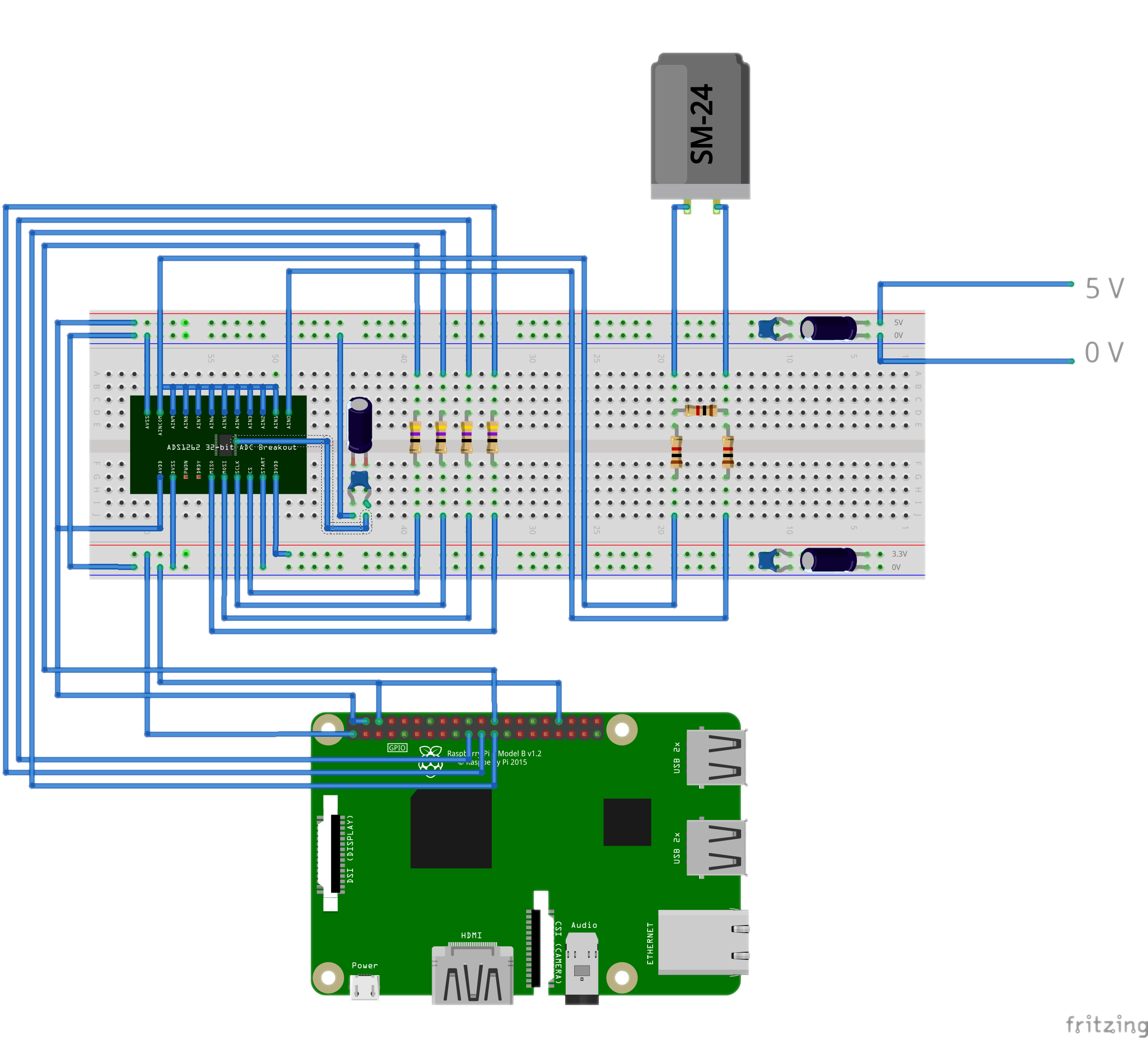In addition to the lack of system reliability of the Raspberry Pi, which was solved by switching the power input to the GPIO pins, there was another annoying fact: The strong noise at the input of the ADS1262. To keep things simple, the input noise was measured by short-circuiting the pins AIN0 and AONCOM. The measured value should be zero, instead noise of about 16 bits occurred. The noise level depends on many factors such as the design of the protoboard and the quality of the power source. Nevertheless, a noise level of about 16 bits was much too high. As a result, only the remaining 16 out of a total of 32 bits could be used for measurements, losing all the advantages over a 16-bit ADC. So all kinds of improvements were checked, such as the use of a battery as a power supply, various other power supplies, different ground levels for AINCOM and a few other things. Nothing really helped. Normally, using a battery as a power supply should lead to better results. However, since the ADS1262 was still paired with the Raspberry Pi, the peaks of the Raspberry could not be removed. One reason for the peaks is probably the switch mode power supply unit on board of the Raspberry, which generates 3.3 V from the 5 V input. In order to remove the coupling, optocouplers would be required for all signal lines between the Raspberry Pi and the ADS1262, which would add significantly to the complexity.
Finally, there was one last try: Using larger capacitors (47 µF and 100 nF) between the REFOUT pin and ground and using the REFOUT voltage as the potential for AINCOM. Wow, what a difference! The noise dropped by 4 bits downto 12 bits, which is a factor of 16! Now 20 noise free bits are left at the ADC, which made everyone sleep soundly again 🙂 .
There was a 1 µF capacitor between these pins already on the Protocentral breakout board, but maybe the capacitor was damaged since of the soldering from all the tests or the capacity was to small.
Hardware
Circuit diagram
There are two capacitors (47 µF and 100 nF) between the refout pin and ground. The refout pin is pin 8 of the ADS1262, which doesn’t have an own pin at the Protocentral breakout board. Instead either pin 8 of the ADS1262 or the pin of the little capacitor on the board, which is connected to pin 8, must be used.
Furthermore, the other input pins AIN1 up to AIN9 are set to AINCOM level in order to prevent oscillation.


Leave a Reply
You must be logged in to post a comment.